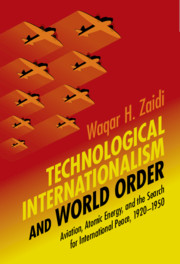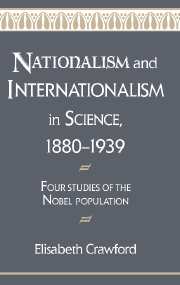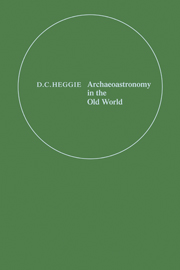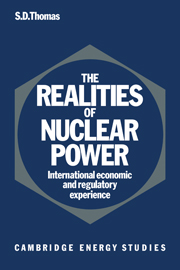Technological Internationalism and World Order
Between 1920 and 1950, British and US internationalists called for aviation and atomic energy to be taken out of the hands of nation-states, and instead used by international organizations such as the League of Nations and the United Nations. An international air force was to enforce collective security and internationalized civil aviation was to bind the world together through trade and communication. The bomber and the atomic bomb, now associated with death and devastation, were to be instruments of world peace. Drawing on rich archival research and focusing on public and private discourse relating to the control of aviation and atomic energy, Waqar H. Zaidi highlights neglected technological and militaristic strands in twentieth-century liberal internationalism, and transforms our understanding of the place of science and technology in twentieth-century international relations.
- The first in-depth study of technological internationalism
- Brings together the histories of aviation and atomic energy
- Demonstrates how technological internationalism was a significant force in twentieth century politics and culture.
Reviews & endorsements
'In his profound and thoroughly researched study of how the coming of aeroplanes and the atomic bomb inspired new thinking about global peace through the international control of these inventions, S. Waqar H. Zaidi offers a masterclass in how the history of internationalism should be written.' Joseph Maiolo, author of Cry Havoc: How the Arms Race Drove the World to War, 1931-194
'The bomber and the bomb changed the world, but how did they change thinking about international society? Zaidi's brilliantly original study, places military technologies at the heart of the history of 20th-century internationalism. Connecting the interwar period with the Cold War, it will be essential reading for anyone interested in understanding both the ambition and the frustrations of the internationalist project.' Adam Tooze, author of Crashed: How a Decade of Financial Crises Changed the World
'Weaving together the histories of aviation and atomic energy, Zaidi makes innovative contributions to scholarship on technology and internationalism. He deftly analyzes how policymakers and intellectuals, on both sides of the Atlantic, sought to transform the airplane and the atomic bomb into catalysts of global order rather than global catastrophe.' Jenifer Van Vleck, author of Empire of the Air: Aviation and the American Ascendancy
Product details
May 2021Adobe eBook Reader
9781108873475
0 pages
This ISBN is for an eBook version which is distributed on our behalf by a third party.
Table of Contents
- Introduction: machines of peace
- 1. Invention, interdependence, and the lag: conceptualizing international relations in the age of the machine
- 2. Controlling scientific war: international air police and the reinvention of disarmament
- 3. The shape of things to come: aviation, the League of Nations, and the transformation of world order
- 4. Air power for a United Nations: the international air force during the Second World War
- 5. Wings for peace: planning for the postwar internationalization of civil aviation
- 6. A battle for atomic internationalism: United States and the international control of atomic energy
- 7. A blessing in disguise: Britain and the international control of atomic energy
- Conclusion: science, technology, and internationalism into the Cold War and beyond.







